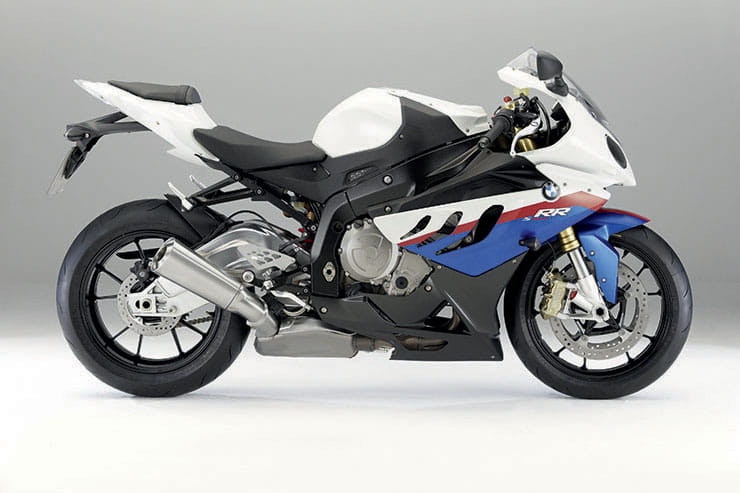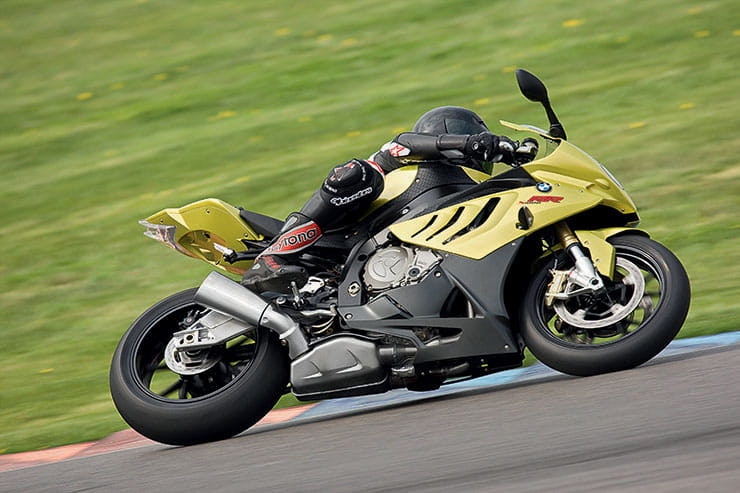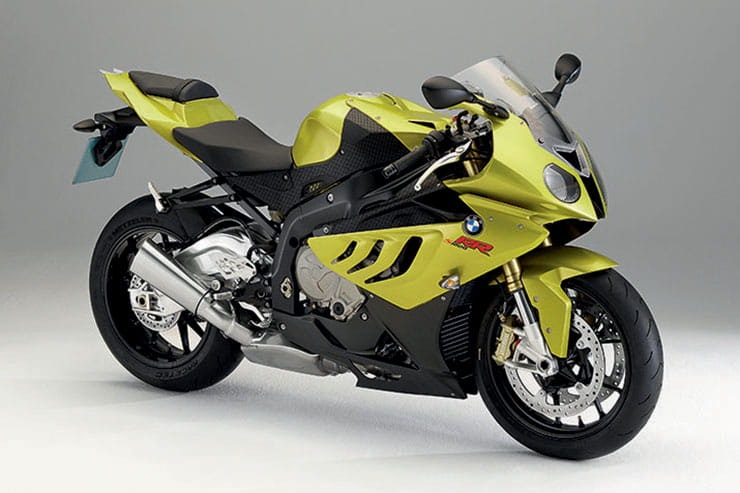BMW S1000RR (2010-2014): Review & Buying Guide
By Jon Urry
Massively experienced road tester
18.12.2019
Why you want it:
It is hard to imagine that the BMW S1000RR is now getting on for ten years old as even the very first generation of this revolutionary motorcycle is still an astounding bike whose capabilities are well beyond that of 99% of riders. But it is and the machine that launched the digital superbike revolution is now, well, a fairly old used bike! But that doesn’t make it any less of a potent package…
The thing that sets the RR aside from any of its equivalent-age litre bike Japanese inline four rivals is the fact that because it was so far ahead of its time, even by modern standards the original RR is pretty much on the money where its rivals of the day lack the current crop of electronic assists. An IMU, ABS, power modes and even (if you buy the second generation) heated grips – the S1000RR has them all. Ok, they may be a little more rudimentary in their action than modern systems, but will road riders really spot the fact the traction control is a bit abrupt when it cuts in or that the ABS isn’t angle-sensitive? In all honestly no, which is why in many ways a used RR is a far better buy than a brand new sportsbike with all the bells and whistles.
If you are after a litre bike for road or track riding that will make the hairs on the back of your neck stick up with its performance and yet still have a fairly roomy ‘old-school’ riding position and strong mid-range, the RR is the one to go for. At just over £6,000 you can buy and own a first-generation RR for less than you will fork out on a three year PCP deal on a new litre sportsbike and unless you have a contract with a WSB team hanging on your wall, you will be very hard pushed to ride it hard enough to discover what it lacks in comparison to a modern machine. It may be ten years old, but the revolutionary S1000RR is still a fresh today as it was back when it first hit our roads.
What to look for:
First generation models quite often suffer from small, but irritating, teething issues and the S1000RR was no exception. However, the more important thing to consider when buying an RR is its spec because a few first-generation models were actually sold minus the electronics package (which can’t be retro fitted) as BMW thought that owners may not want it! Very few of these bikes are on the market, but always be a touch wary of a cheap RR as it may well be one of these bikes and you really don’t want to buy one over the internet and then discover afterwards it lacks traction control and ABS.
Onto more pressing issues and if you look at forums inhabited by racers or trackday regulars you will see a few posts about the original RR’s gearbox letting go. The issue is linked to the BMW official quickshifter, which basically isn’t very good and its kill time isn’t ideal to allow the gears to synchronise together, resulting in third generally going AWOL. Quality aftermarket shifters which allow the kill time to be altered give the gearbox an easier time, but the root of the issue is 3rd gear’s construction, which was actually quietly tweaked by BMW during the RR’s lifespan, meaning later models have more robust gears. Another worry about trackday/ex-race bikes is the quality of the oil used as anything other than fully-synthetic can result in major engine damage. It’s not an issue on road bikes, only track bikes whose engines are used considerably harder.
With ex-track bikes avoided, service history is your next worry as the RR is quite expensive to run, especially if it is approaching its 18,000-mile valve clearance check. BMW insist on the brake fluid being changed every two years, which is a bit convoluted and therefore pricey to add into a service due to the ABS system, and the valve-clearance check service will set you back over £600. If the brake fluid isn’t regularly changed the ABS system can be damaged due to contamination and that’s a massive bill, so always see if it is nice and clean. More than a few owners have reported that early RR’s switchgear has failed (a common theme as it was a new design of switchgear) and that the immobiliser’s antenna can also pack up, which again is a bit of a fiddle and pricey to change. Ensure all is well and that the switchgear is functioning properly. If the bike has a race exhaust fitted don’t worry if it hasn’t been on a dyno, the RR has a knock-sensor and will automatically re-calibrate itself after a few miles of riding to ensure it doesn’t run lean.
In terms of bolt-on extras, most RR owners limit themselves to a race can and tail tidy, both of which are excellent additions. Motorsports colours (red/white/blue) actually cost a premium from BMW when new, but don’t affect a used bike’s price tag, however official BMW HP accessories will boost its value. Only the 2012-onwards bike has the option of BMW’s heated grips – something you really do want!
Any updates?
As the S1000RR was BMW’s first proper superbike, the firm initially fell into the old Japanese pre-financial crisis routine of a small update every two years and a major overhaul every four. With this in mind, the RR received styling updates in 2012 as well as very small chassis and electronic revisions while the motor was physically unchanged but was claimed to have better torque characteristics. Within the forks sit new internals for 2012 while the chassis’ geometry is altered with a revised head angle, offset and swingarm pivot point, all with the aim of improving grip and stability. On the styling front the clocks are new (and now include a lap time indicator) and the asymmetric fairing is tweaked with the tail unit sharper than before and the side vents’ direction altered. BMW also clamed to have improved the throttle’s response and upgraded their Race ABS and Dynamic Traction Control systems for 2012. In 2015 the RR was treated to a more comprehensive update with a more powerful motor, revised frame and significant tweak to its electronics that included cruise control for the first time. In late 2012 BMW also launched the HP4, which was basically an RR with semi-active suspension for the first time, lightweight wheels Race ABS and an Akrapovic exhaust.
What to pay for a BMW S1000RR (2010-2014):
As the RR is still the sportsbike to own, and a BMW to boot, used prices are noticeably higher than an equivalent age Japanese litre bike. You need to expect to pay in the region of £6,000 for a first-generation RR in a private sale or closer to £7,500 from a dealer. If you want the updated model then this figure rises to £7,000 in a private sale or between £8,000 and £9,000 from a dealer. As with all BMW models, spec does play a huge factor in the price with quality BMW parts or optional extras boxes ticked boosting the price tag. If you want an HP4, expect to fork out in the region of £12,000 to £14,000 as it is still quite an exclusive model.
Who to ask:
The RR has a lot of fans all over the world and you are not short of forums or Facebook pages to view. There is a UK-based forum at https://s1000rrforum.co.uk or you can opt for https://www.s1000rrforum.com or https://s1000riders.org or one of the many Facebook pages dedicated to this bike.
BMW S1000RR (2010-2014) Specification:
Looking for bike insurance? Get a quote for this motorcycle with Bennetts motorbike insurance
To learn more about what the spec sheet means, click here for our glossary


